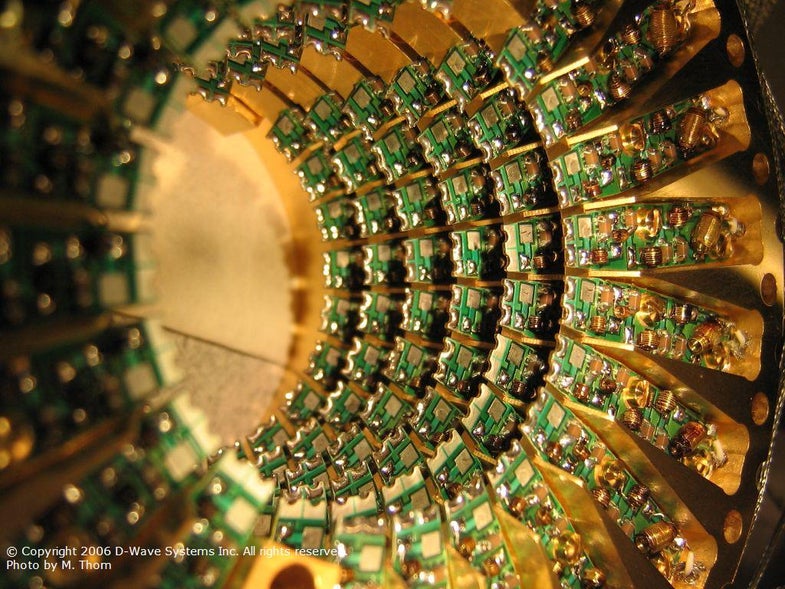IBM Launches Five-Year Effort To Develop Quantum Computing
We may earn revenue from the products available on this page and participate in affiliate programs. Learn more › Ramped-up...

We may earn revenue from the products available on this page and participate in affiliate programs. Learn more ›
Ramped-up research efforts at IBM and other labs in the U.S. and Europe could lead to more powerful and more prevalent quantum computers in the near future.
IBM is breathing new life into a quantum computing research division at its Thomas J. Watson Research Center, reports New York Times. The computer giant has hired alumni from promising quantum computing programs at Yale and the University of California-Santa Barbara, both of which made quantum leaps in the past year using standard superconducting material.
Groups at both universities have been using rhenium or niobium on a semiconductor surface and cooling the system to absolute zero so that it exhibits quantum behavior. As the Times reports, the method relies on standard microelectronics manufacturing tech, which could make quantum computers easier and cheaper to make.
The Santa Barbara researchers told the Times they believe they can double the computational power of their quantum computers by next year.
Quantum computing uses spooky action at a distance to conduct superfast calculations. Rather than using transistors to crunch the ones and zeroes of binary code, quantum computers store data as qubits, which can represent one and zero simultaneously. This superposition enables the computers to solve multiple problems at once, providing quick answers to tough questions. But observing a qubit strips it of this duality — you can only see one state at a time — so physicists must figure out how to extract data from a qubit without directly observing it. That’s where quantum entanglement comes in handy; two qubits can be connected by an invisible wave so that they share each other’s properties. You could then watch one qubit to see what its twin is computing.
None of this is simple, however; there are several competing methods for making the qubits, including laser-entangled ions, LED-powered entangled photons, and more. Google is working with a Canadian firm called D-Wave that has claimed 50-qubit computers, although skeptics have questioned that number. In most systems, the number of entangled qubits remains small, but Yale researchers believe they will increase in the next few years, the Times says.
Even better: with all this practice, physicists are getting a lot better at controlling quantum interactions. Their precision has increased a thousand-fold, one researcher said. That’s good news for anyone studying quantum mechanics.